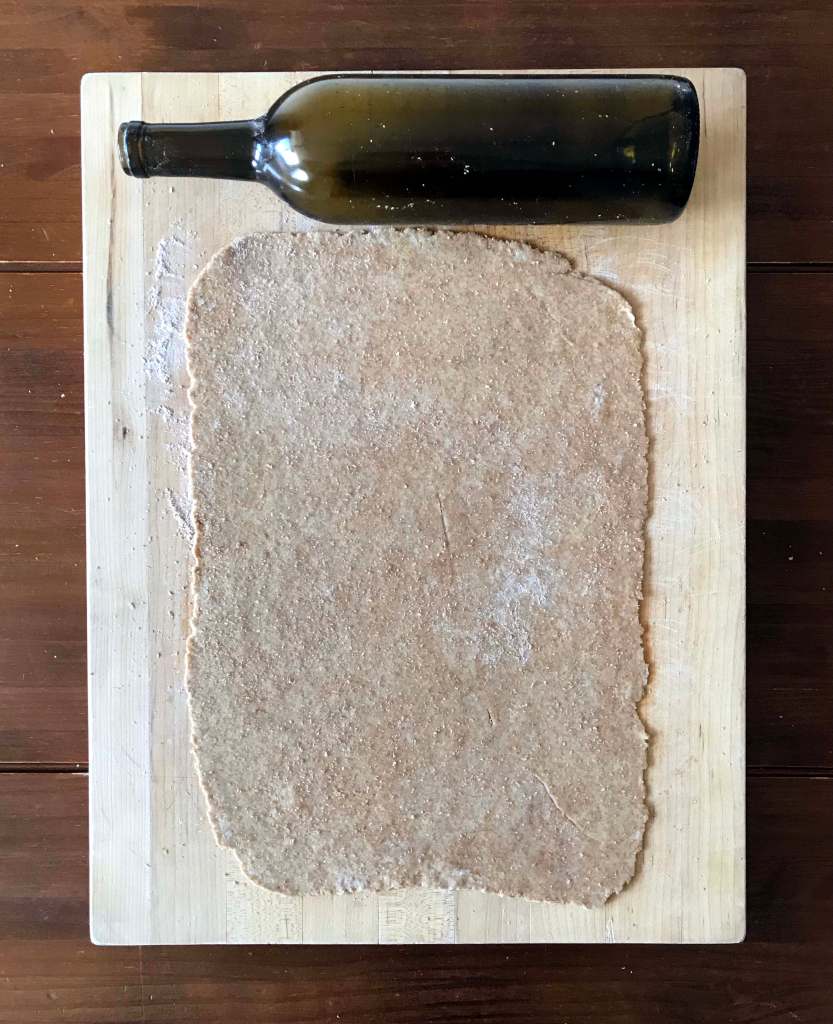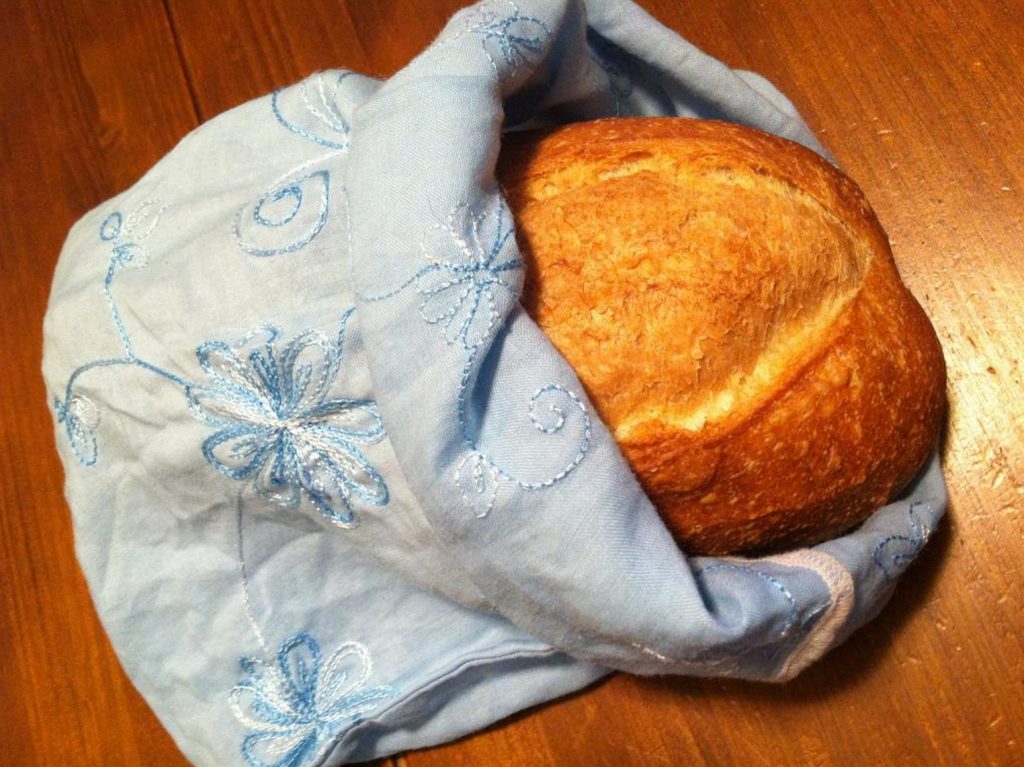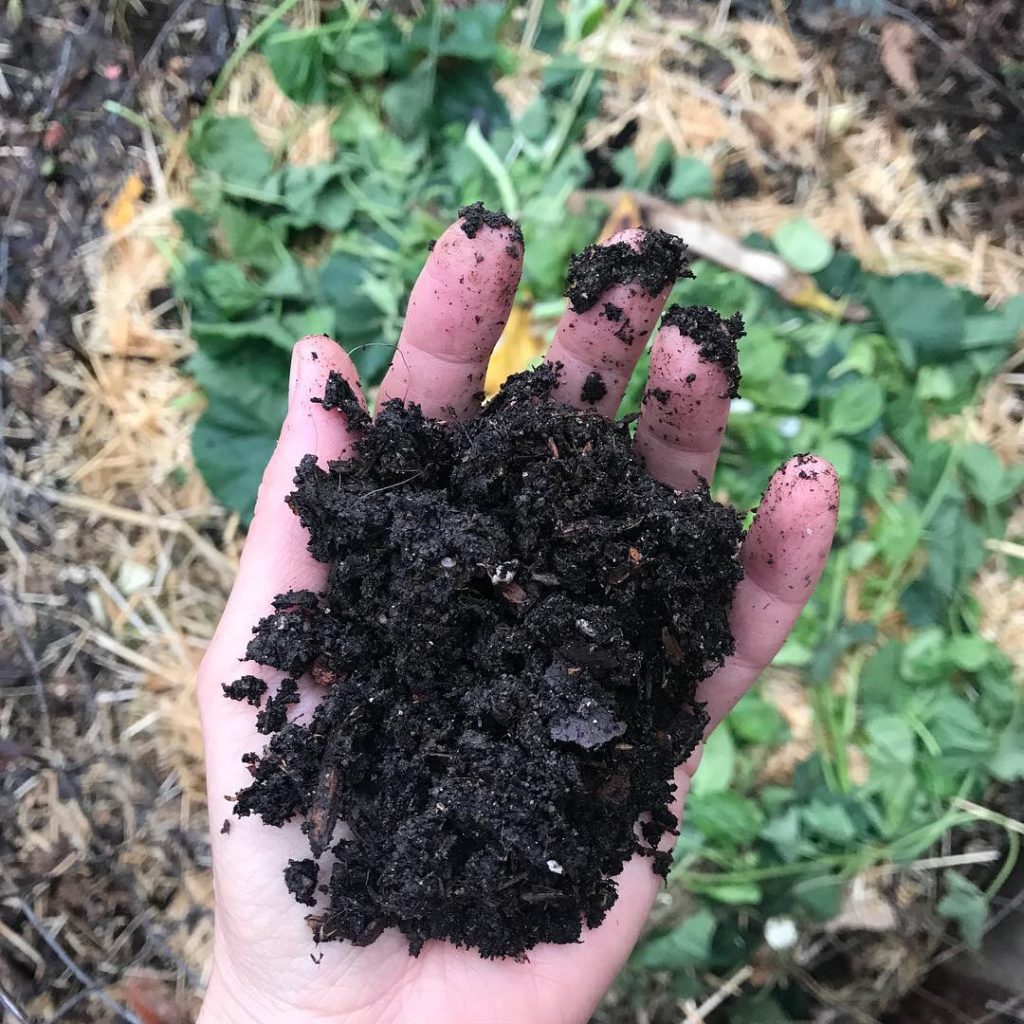The following nine simple swaps will help you minimize plastic waste this Thanksgiving while maximizing taste and saving money.
1. Buy vegetables in cloth produce bags
And serve lots of them! Loose vegetables abound where I live. The farmers’ market has very little plastic and even the grocery stores have a decent selection of naked produce. Fill your cloth produce bags with brussels sprouts, green beans, celery, onions and carrots, for example. Go here for a simple pattern. My daughter MK and I sewed our first cloth produce bags in 2011 and I still use them.
If you don’t sew or don’t have time to sew or don’t want to sew, just buy the bags. You need not plant the seeds to grow the flax to weave the linen to make the cloth to cut the bags (but like me, you may have just added “flax seeds” to your spring seed wish list…). You can find bags in health food stores and co-ops, zero-waste stores and online.
By the way, a group of us will give away cloth produce bags at the Sunnyvale farmers’ market on Saturday, December 11th. We do this to help people reduce the amount of plastic they take home from the market and also to raise awareness about plastic pollution.
2. Bake pumpkin pie with fresh pumpkins (or squash)
Canned food contains a plastic lining that often contains bisphenols, known endocrine disruptors. And while many manufacturers no longer put BPA (one kind of bisphenol) in their plastic linings, many have turned to BPS or BPF (other types of bisphenols).
Some food manufacturers have begun to line their cans with natural resins but you’d have to do some sleuthing to figure out which cans contain those more natural linings because the practice of slapping the “natural” claim on food labels has rendered the term natural completely meaningless and even suspect.
Feeding ourselves should not require this much research.
Instead of spending time researching, I cook whole sugar pie pumpkins or kabocha squash (aka Japanese pumpkins) in a pressure cooker in minutes. Roasting in the oven takes longer but renders a richer flavor. I then either run the flesh through a food mill or my food processor. Last night, I processed three small pumpkins and rendered five 16-ounce jars of puree. Of course, opening a can requires zero work but once you taste fresh pumpkin in this pumpkin pie or this pumpkin and spice sourdough quick bread, you’ll want to bake with fresh pumpkins only.
And in other good news, within days after you stop eating canned food, your BPA levels drop quickly.

3. Make the pie crust too
Pre-made frozen pie crusts for your Thanksgiving pies do save time but you pay a premium for an inferior product, highly packaged with single-use plastic and aluminum. (Clean aluminum can be recycled but is not a renewable resource.) I understand that making pastry can freak people out.
Chill the fat and water and even consider tossing the flour and rolling pin into the freezer for a little while. My daughter recently freaked me out when she sent me a recipe she made at work for pastry made with boiling water. Although she claims hot water makes good pastry, the method goes against everything my mother taught me (about pastry) and I will continue to chill for now.
You’ll find a simple pastry recipe here.
4. Stuff it from scratch
If pie crust still intimidates you after my pep talk, stuffing should not. A box of stuffing for your Thanksgiving feast contains a plastic bag filled with seasoned dry bread bits. You boil water or broth, add a bit of butter or margarine, stir in the bread bits and then cook the stuffing.
With a small amount of planning, you can easily make your own stuffing.
If you already have stale bread on hand, you’re all set! By making stuffing with it, you’ll also prevent food waste. If you don’t have a loaf of stale bread, buy a loaf of bread a few days before Thanksgiving. Some bakeries will allow you to buy a fresh loaf in a cloth produce bag (ask about day-old bread also and save money). Or make the bread for the stuffing—but only if you want to! You don’t have to go all Little Red Hen with your bread. I have a loaf of sourdough bread in the freezer that I’ll thaw out on the weekend for stuffing.
Slice several pieces of bread, cube the slices and spread the cubes on a cookie sheet. Cover with another inverted cookie sheet and wait. When you make the stuffing a few days later, sauté onions and celery in fat, add ground sage and savory, salt and pepper, stir in bread cubes and add enough broth to moisten them. You can also add nuts or orzo (pasta that looks like rice) or dried cranberries or… Bake in a covered dish (a small Dutch oven works well).
5. Ferment fruit chutney
I have been able to buy my Thanksgiving cranberries plastic-free only once—they almost always come in a plastic bag. So my daughter MK and I started to make fruit chutney rather than cranberry sauce for Thanksgiving back when we went plastic-free in 2011. It tastes fabulous with the big savory meal.
A few years ago, I decided to ferment the fruit chutney. So good! Essentially, you chop up a bunch of fruit, stuff it in a jar and wait for the good bacteria present on the food to ferment it. I make this pear-cranberry chutney with fresh pears from the farmers’ market and dried cranberries from the bulk bins. Last year, I made persimmon chutney. You need to start fermented chutney at least a few days in advance of the meal to allow it to ferment.
6. As you prep, compost inedible scraps
Compost your food scraps and you will keep much of the wet stuff—if not all of it—out of your trash. If so, you can line your trash can with newspaper instead of plastic (depending on what your city requires for trash pickup). Go here for instructions on making paper bags out of newspaper. You may also be able to use newspaper bags to collect food scraps for your city’s green bin program if it has one.
7. Buy wine with a natural cork
Recyclable, renewable and biodegradable cork comes from oak trees—some up to 300 years old—most of which grow in forests in Portugal, Spain, Algeria, Morocco, Italy, Tunisia and France. Highly skilled, well-paid local workers harvest cork from the trees without chopping them down. The still-standing trees grow undisturbed until the next harvest, 9 to 12 years later.
According to a WWF report, these forests host up to 135 different species per 0.1 hectare (about a quarter acre), the size of a house lot. The trees provide shade for the ecosystem, they retain water in the soil and they draw down carbon dioxide from the atmosphere.
Cork recycling companies harvest cork from wine stores—in the form of cork drop-off bins. These corks go on to have a second life as shoes, yoga blocks and other goods. During Covid, some stores may have shut down their drop boxes temporarily so hold onto the corks in the meantime. I recently dropped off corks at Whole Foods and before Covid, at Bevmo or Rainbow Grocery in San Francisco. All of those bins belong to Recork Official (check the company website for a map of drop-off locations). As I said, please contact the store near you before dropping off your corks in case the bin has temporarily closed.
Depending on where you live, natural wine corks may go in your municipality’s green bin. Ask your city for more information.
Not sure if a natural or plastic cork has stoppered the wine bottle you’ve pulled from the store shelf? Enter the brand, name and type of wine into the Corkwatch database to find out.
8. Set the table with reusables
If you cook for a large number of diners, you may feel tempted to serve your Thanksgiving feast on throwaway plates along with plastic cutlery and plastic cups. Washing reusable plates, cutlery and cups does take more time but you will save money, your food will look more appetizing and you won’t ingest microplastics which plastics can shed.
Unless you beat your dirty laundry on rocks, cloth napkins require little work to wash and take up little space in the washing machine. And no, the napkins themselves do not consist of plastic but the packaging sleeve does. Also keep in mind that paper—organic material—releases methane gas when it rots in a landfill, just as food does.
9. Store Thanksgiving leftovers without plastic
If you served a bunch of sides in bowls, you can merely place clean plates on top and pop the now-covered, easily stackable bowls into the refrigerator. An overturned cookie sheet also works. Fill glass jars with leftovers so you can see at a glance what food you have squirreled away in the refrigerator.
Or freeze jars. I use wide-mouth jars with flush sides to freeze all kinds of food. Extra cranberry sauce, mashed potatoes and sliced turkey all freeze well as do some of the ingredients you used to prep your meal. Have extra vegetable broth? Freeze it in jar—and leave headspace for it to expand. Have leftover pumpkin purée? Into a jar and into the freezer it goes.
Extra dinner rolls freeze well in a cloth produce bag for up to a couple of weeks. Go here for more on freezing food without plastic.












As usual, good advice with photos that make me want the food right now, especially good fresh bread and pie!
Thank you, Donnalee. I get hungry writing these! Have a happy and safe Thanksgiving.
Thanks. You too.
You’re the best! Thank you for your commitment & determination 🙏🏼
For a while during Covid, our Co-op did not allow us to bring in the reusable bags, but they allow this once again and I’m really glad!
That’s good news. I should add a link to an article about the safety of reusables during Covid—to help arm people whose stores still won’t allow reusables.
Wonderful!
Thank-you for the information on corks, I will use the links for the information when I buy my next bottle of wine.
Hi Anne-Marie, Great content. I was inspired by your passion for understanding trash and having a healthy and happy life without hurting the environment.
I recommend also Lauren Singers’ blog “8 Simple Ways to Reduce Holiday Food Waste”
https://trashisfortossers.com/8-simple-ways-to-reduce-thanksgiving-food-waste/
I don’t know her personally but like you she also inspires me towards zero waste. Thank you!